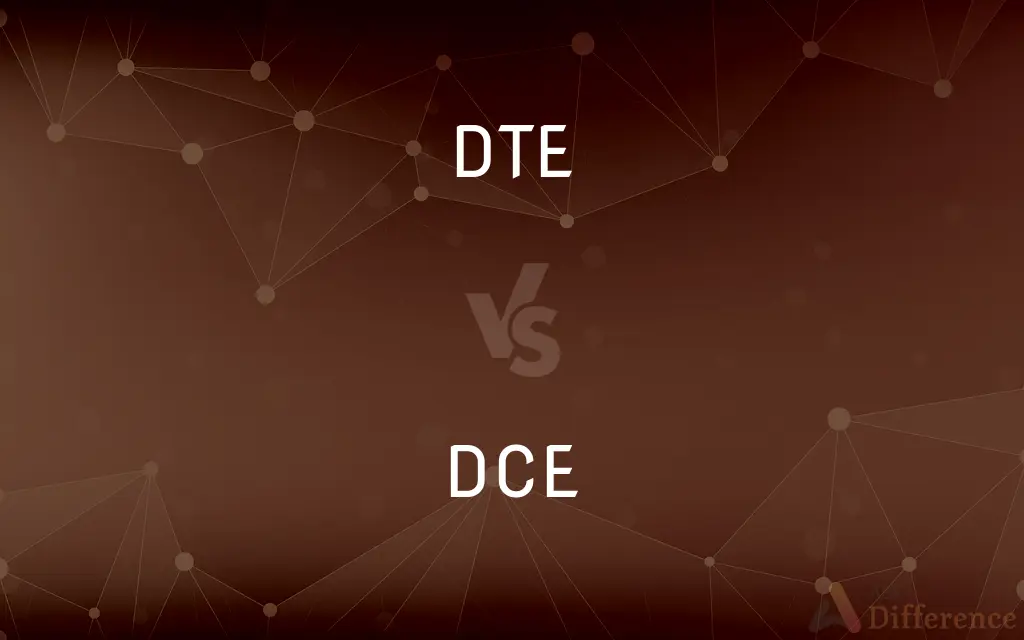What Is The Difference Between Dte And Consumers Energy
What Is The Difference Between Dte And Consumers Energy - As we discussed previously, the state’s 2008 energy law mandated that 10% of consumers’ energy (and dte’s) be generated by renewable sources by. However, there are some subtle. Both dte and consumers are regulated monopolies, meaning they're the only game in town for most michiganders. Dte energy and consumers energy each offer distinct services, pricing structures, and regional influences that impact their customers.
As we discussed previously, the state’s 2008 energy law mandated that 10% of consumers’ energy (and dte’s) be generated by renewable sources by. Dte energy and consumers energy each offer distinct services, pricing structures, and regional influences that impact their customers. Both dte and consumers are regulated monopolies, meaning they're the only game in town for most michiganders. However, there are some subtle.
Both dte and consumers are regulated monopolies, meaning they're the only game in town for most michiganders. Dte energy and consumers energy each offer distinct services, pricing structures, and regional influences that impact their customers. As we discussed previously, the state’s 2008 energy law mandated that 10% of consumers’ energy (and dte’s) be generated by renewable sources by. However, there are some subtle.
Whole System Bonus Promotion from DTE & Consumers Energy Up to 300
As we discussed previously, the state’s 2008 energy law mandated that 10% of consumers’ energy (and dte’s) be generated by renewable sources by. Both dte and consumers are regulated monopolies, meaning they're the only game in town for most michiganders. Dte energy and consumers energy each offer distinct services, pricing structures, and regional influences that impact their customers. However, there.
Consumers Energy vs DTE Energy Comparably
However, there are some subtle. Both dte and consumers are regulated monopolies, meaning they're the only game in town for most michiganders. As we discussed previously, the state’s 2008 energy law mandated that 10% of consumers’ energy (and dte’s) be generated by renewable sources by. Dte energy and consumers energy each offer distinct services, pricing structures, and regional influences that.
DTE vs. DCE What’s the Difference?
As we discussed previously, the state’s 2008 energy law mandated that 10% of consumers’ energy (and dte’s) be generated by renewable sources by. Dte energy and consumers energy each offer distinct services, pricing structures, and regional influences that impact their customers. However, there are some subtle. Both dte and consumers are regulated monopolies, meaning they're the only game in town.
DTE, Consumers Energy to Expand Midwest EV Charging Network NGT News
However, there are some subtle. Both dte and consumers are regulated monopolies, meaning they're the only game in town for most michiganders. Dte energy and consumers energy each offer distinct services, pricing structures, and regional influences that impact their customers. As we discussed previously, the state’s 2008 energy law mandated that 10% of consumers’ energy (and dte’s) be generated by.
DTE Energy Culture Comparably
However, there are some subtle. Both dte and consumers are regulated monopolies, meaning they're the only game in town for most michiganders. Dte energy and consumers energy each offer distinct services, pricing structures, and regional influences that impact their customers. As we discussed previously, the state’s 2008 energy law mandated that 10% of consumers’ energy (and dte’s) be generated by.
Lawmakers question DTE, Consumers Energy CBS Detroit
Both dte and consumers are regulated monopolies, meaning they're the only game in town for most michiganders. Dte energy and consumers energy each offer distinct services, pricing structures, and regional influences that impact their customers. However, there are some subtle. As we discussed previously, the state’s 2008 energy law mandated that 10% of consumers’ energy (and dte’s) be generated by.
[Business] DTE Energy, Consumers Energy face poweroutage challenges
However, there are some subtle. Dte energy and consumers energy each offer distinct services, pricing structures, and regional influences that impact their customers. As we discussed previously, the state’s 2008 energy law mandated that 10% of consumers’ energy (and dte’s) be generated by renewable sources by. Both dte and consumers are regulated monopolies, meaning they're the only game in town.
DTE, Consumers Energy give timelines for power restoration in aftermath
However, there are some subtle. Both dte and consumers are regulated monopolies, meaning they're the only game in town for most michiganders. As we discussed previously, the state’s 2008 energy law mandated that 10% of consumers’ energy (and dte’s) be generated by renewable sources by. Dte energy and consumers energy each offer distinct services, pricing structures, and regional influences that.
DTE Energy and Consumers Energy Accelerate Plans for...
Dte energy and consumers energy each offer distinct services, pricing structures, and regional influences that impact their customers. As we discussed previously, the state’s 2008 energy law mandated that 10% of consumers’ energy (and dte’s) be generated by renewable sources by. Both dte and consumers are regulated monopolies, meaning they're the only game in town for most michiganders. However, there.
DTE vs. DCE — What’s the Difference?
Dte energy and consumers energy each offer distinct services, pricing structures, and regional influences that impact their customers. As we discussed previously, the state’s 2008 energy law mandated that 10% of consumers’ energy (and dte’s) be generated by renewable sources by. However, there are some subtle. Both dte and consumers are regulated monopolies, meaning they're the only game in town.
Both Dte And Consumers Are Regulated Monopolies, Meaning They're The Only Game In Town For Most Michiganders.
Dte energy and consumers energy each offer distinct services, pricing structures, and regional influences that impact their customers. However, there are some subtle. As we discussed previously, the state’s 2008 energy law mandated that 10% of consumers’ energy (and dte’s) be generated by renewable sources by.






![[Business] DTE Energy, Consumers Energy face poweroutage challenges](https://external-preview.redd.it/business-dte-energy-consumers-energy-face-power-outage-v0-QGcyMDyTPSIr_Od-vaYyCHi0fb1YP5pRlaZo17wW4Nc.jpg?auto=webp&s=acca2581dec1f6d16f30d41eb040353bf6637865)


